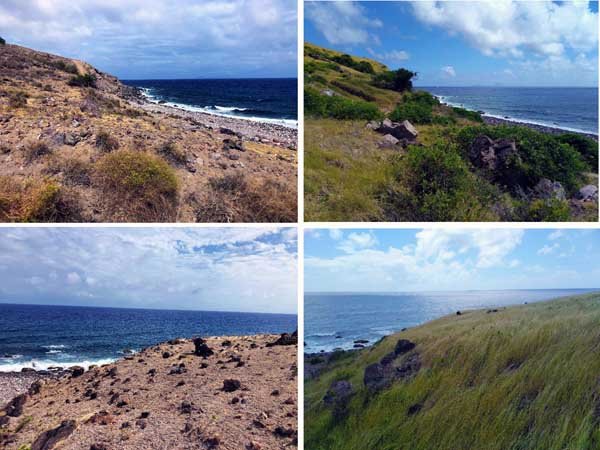The Goat Control Project on Saba is making significant strides in its mission to remove free-roaming livestock from the island, mainly goats, while simultaneously promoting sustainable animal husbandry. The project, initiated in 2020, aims to eradicate an estimated population of 3,000-5,000 goats, and if applicable other free-roaming livestock, within a three-year period. The Public Entity Saba is pleased to share the project’s progress and outline its plans for the future.

Successes of Local Hunters
Since the implementation of the project, over 4,000 goats have been successfully removed, with more than 2,700 goats eliminated by local hunters during the recent bounty period, and 1,300 goats eliminated by invasive species hunters. This extraordinary effort has resulted in a remarkable transformation of the island’s vegetation, showcasing the positive impact of the goat control program. Previously barren areas, such as the Sulphur Mine, Giles Quarter, and Black Rocks, have experienced significant regrowth, contributing to the overall ecological health of Saba.
Vegetation Recovery, Reforestation, and Public Safety
The positive outcomes of the project extend beyond vegetation recovery. Reforestation efforts have shown promising results, with a 100% survival rate thus far for newly planted trees over the past year. In the coming years, the Public Entity will focus on planting indigenous trees to mitigate soil erosion and enhance the island’s biodiversity. Additionally, plans are underway to establish fruit parks in each village, which will contribute to both food production and the island’s overall beauty. The significant decline in the goat population has also increased public safety, with fewer rockslides along the roads thanks to a reduction in erosion.
The Way Forward: Intensification
For the project to be successful, all free-roaming livestock will need to be removed. This will prevent a new population of roaming livestock to develop in the future, which would negate the current successes with regard to vegetation recovery and erosion reduction. The Public Entity Saba will soon intensify the culling of free-roaming livestock on Saba. A government hunter and three designated hunters have been appointed for this purpose. Matthew Barnes recently started as a government hunter. Julian Hassell, Charles Hassell, and Brion Windfield have been appointed as designated hunters to assist when needed.
The team will be active in the three designated areas that were announced in December 2022 and will also cull in areas where livestock is a nuisance or where the animals cause damage or create safety risks.
The three focus areas are:
– Well’s Bay, parts of Ladder Bay, and going up to the back of Troy Hill (zone 1);
– Crispeen, Tara Ground, the Bottom Mountain, and across to Troy Hill (zone 2);
– Johnny’s Ground, Banana Gut to Over the Peak (zone 3).
Prior to the start of hunting activities, public notices will be posted, and signage will be placed at the entrances of hunting areas. The Public Entity will stay in close contact with the police throughout this phase of the project. During this phase, the bounty period will continue, at least until the end of August. Local hunters are strongly encouraged to continue making use of this opportunity
GIS
 Saba News News and Information from Saba Island, Dutch Caribbean
Saba News News and Information from Saba Island, Dutch Caribbean